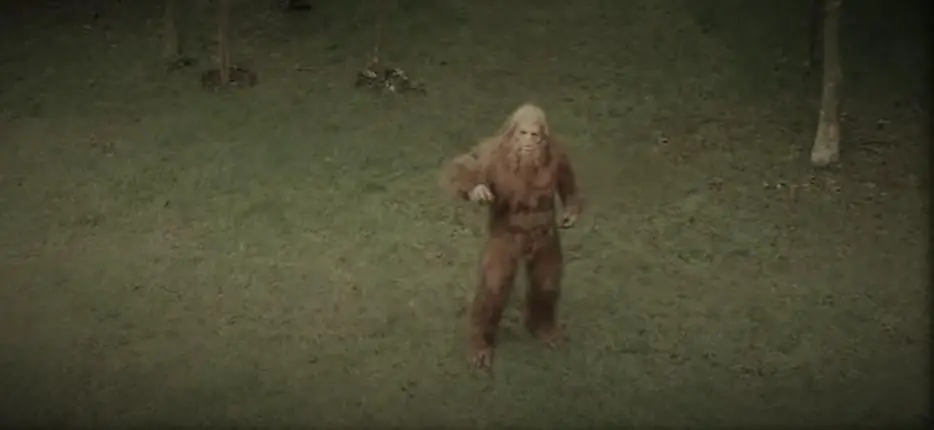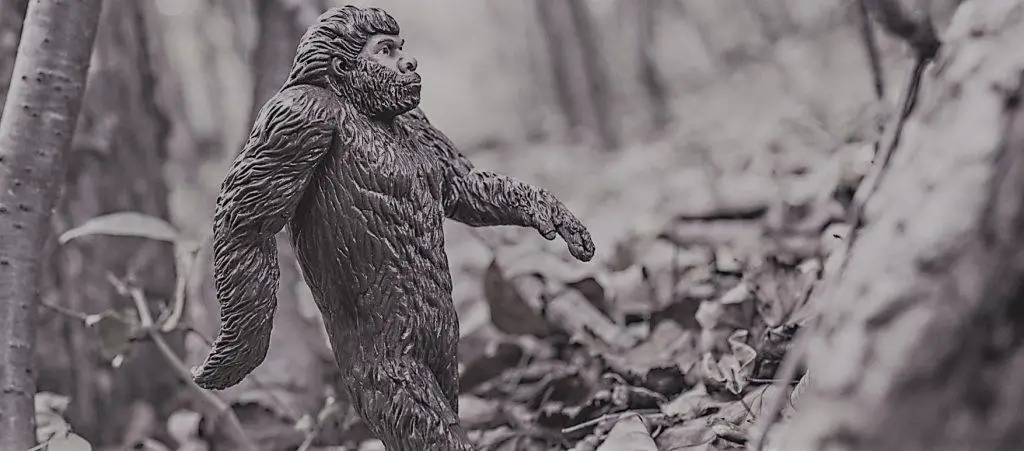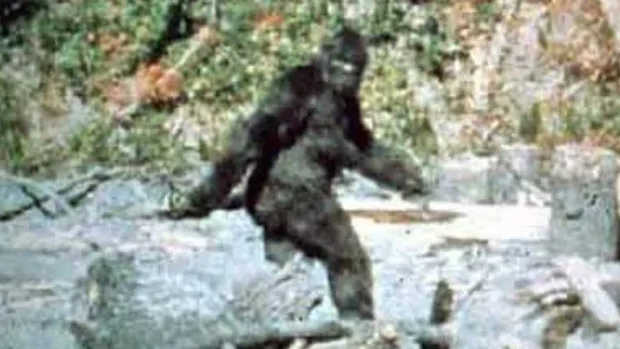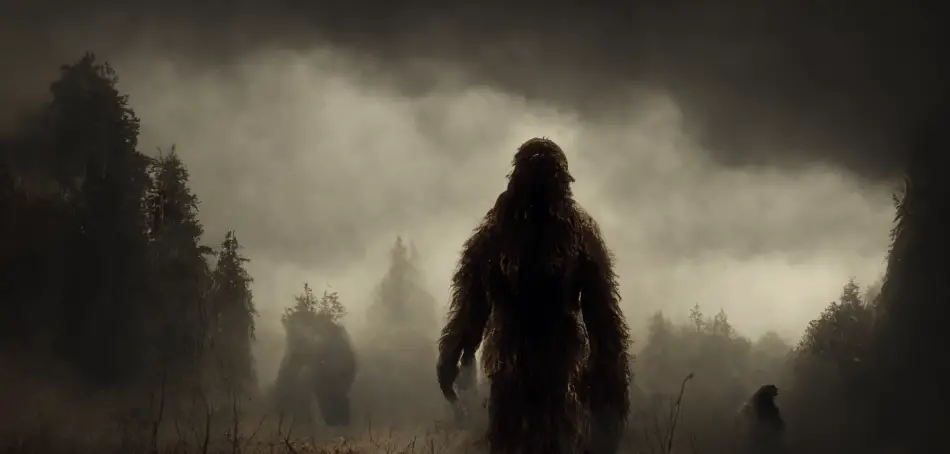Share the Lore!
By: Alex Postrado
The Legend Of The Sasquatch: Separating The Truth From The Tale
If there is one cryptid to beat all other cryptids in hide and seek, it would probably be the Sasquatch.
We have known him for quite a long time now — commonly from local legends, lifted from alleged encounters with a wild, big-footed, ape-man.
But, up to this day, proof to validate this hairy humanoid monster’s existence remains insubstantial.
That is despite the advancements in photo and video technology over the years!
Elusive to a great extent, the Sasquatch — unlike other mythical mysteries out there — have dodged giving a straight answer to whether he is real or not.
So, the debate among the believers and the skeptics continues.
But, other than his questionable reality, what else do we know about the Sasquatch? And why is he considered the best-known cryptid in all of American folklore?

The Legend of the Sasquatch
In the depths of the North American woodlands, particularly in Canada and the northwestern United States, lurks the Sasquatch.
Or, at least, that is what Indigenous legends say!
The Sasquatch is a bipedal, apelike creature with human-like attributes.
Although described inconsistently in different accounts, it is believed that the Sasquatch stands unnaturally large — at approximately 2 to 4.5 meters tall.
It has thick, black or brown fur, clawed hands and feet, and — as some claim — a pair of red or yellow eyes that ‘glow’ whenever the monster is spotted at night.
Funnily enough, some also allege that the Sasquatch possibly has no neck — or, maybe, has a short, not-quite-visible one.
That it has broad shoulders, unusually long arms, and have I mentioned… big feet?
Supposed footprints of the Sasquatch show clawed prints that measure up to 60 cm, or about 24 inches, long.
This explains the creature’s other — perhaps, more commonly known — moniker, Bigfoot.
But, big as he may be in both size and stature, the Sasquatch — or Bigfoot — is believed to rarely indulge in a strict meat diet.
You might think that having no natural predator would cause the Sasquatch to feast on every animal in the forest, however, legends say that he is, in fact, an omnivore — typically eating small mammals, mushrooms, and any fruit or greenery nearby.
Moreover, instead of letting out loud, guttural growls — as what is generally expected from towering monsters — the Sasquatch, as some stories go, emits high-pitched cries or whistles.
This only comes when the creature is either reacting to something or trying to communicate.
Most of the time, he chooses to roam the forests silently — as if carefully avoiding any unwanted gaze, especially from humans.
Though, if that is the case, how does any trekker know that the Sasquatch is possibly prowling near?
The answer could lie beneath the foul smell that is believed to accompany the apelike cryptid.
Several accounts claim that this unexplained stench often signals the appearance of Bigfoot.
Uprooted or stacked-in-patterns coniferous trees along the path could also hint that the Sasquatch is not far off, since these markings are said to be displays of his territorial behaviors.
But, fear not — most reports about the Sasquatch tell of him being more or less non-violent. In fact, some argue that the big-footed ape-man is somewhat more afraid of us, humans than we are of him.
And to be fair, why wouldn’t he be when humans have been constantly tracking him down for “photographic evidence” since the first we have heard about his legend?

Where the Legend of Sasquatch Started
Chroniclers say that Sasquatch sightings predominantly happen in the forests of British Columbia, Oregon, Washington, and Northern California.
This could explain why the name Sasquatch, itself, is believed to come from a language spoken by the Sts’ailes people, an Indigenous group who historically lived around the area.
The language is called Halq’emeylem.
And several etymologists note that Sasquatch could be an Anglicization of the Halq’emeylem name Sasq’ets, or a derivation of the Salish word se’sxac, meaning “wild men” or “hairy men“.
The Sts’ailes people hold that Sas’qets are some sort of preternatural creatures — rather than an untapped species of solitary animals, as some suggest — and that they can travel between realms — the physical and the spiritual.
Meanwhile, in other parts of North America, the Sasquatch is viewed as a mountain-dwelling woodwose that takes on varying names, depending on the region.

Some examples are:
- Skunk Ape in Florida and several other southern states;
- Wood Booger in Virginia;
- Wood Ape, Momo, or Fouke Monster in some parts of Arkansas and Missouri;
- Grassman in Ohio;
- Bushman in northwest Canada;
- Treeman in Spokane;
- Monkey Man in Oklahoma;
- Honey Island Swamp Monster in Louisiana;
- Mogollon Monster in Arizona;
- Big Muddy Monster in southern Illinois;
- Dewey Lake Monster in Michigan;
- Old Hairy Bill in Texas;
- And, as mentioned earlier, Bigfoot.
The Bigfoot moniker is believed to have originated in a 1958 story published in the Humboldt Times by journalist Andrew Genzoli.
In the paper, he highlighted the discovery of “a set of large, 410 millimeters human-like footprints” by some local loggers near the Six Rivers National Forest.
The men began describing the mysterious mega-footprints simply as “Big Foot” — as reported in follow-up stories, written due to popular demand.
Apparently, the name caught on. And soon, the legend of Bigfoot — A.K.A. the Sasquatch — was born!
Although the name Bigfoot is fairly contemporary, tales about giant, anthropomorphic ape-men have long existed in ancestor history.
Proof of that would be the Tule River Indian Reservation’s Painted Rock petroglyphs.
It shows an alleged portrait of “a group of Bigfoots” which they call the Family. The largest of the glyphs? Known as the Hairy Man, claimed to be between 500 and 1000 years old.
16th century Spanish and Mexican explorers who have set foot in California during several of their voyages have also reported seeing large figures creeping up on their campsites at night. They called them the Dark Watchers or Los Vigilantes Oscuros.
In 1721, a French Jesuit priest from the area we now know as Mississippi also recounted his brush with a hairy, livestock-stealing monster from the woods.
And in more recent centuries, references to these Sasquatch-like creatures only burgeoned — perhaps, arguably even reaching other continents!
In other cultures, Bigfoot-like monsters also make appearances. These counterparts are called:
- Yeti or the Abominable Snowman in the Himalayan region;
- The Almas in Mongolia;
- Yeren in China;
- And Yowie in Australia.
But with every version of the Sasquatch lore comes the undying question of whether or not the monster we collectively fear is actually real.
Is the Sasquatch Real?
The wrangle over the truth to the legend of the Sasquatch has carried on for well over a couple of centuries now.
And since it hit its peak in the 70s, the Sasquatch has been deemed the “first widely popularized example of pseudoscience” in all of American culture.

That is to say, the ‘reality’ of the big-footed Sasquatch remains snubbed by most scientists.
That, while the existence of Bigfoot is claimed by some to be factual, the general concept — regardless of the version — is “incompatible with the scientific method“.
Such incompatibilities could be signified by claims that say that the Sasquatch:
- Hunts at night, even though neither apes nor humans are known to be fundamentally nocturnal;
- Possesses eyeshine, despite apes and humans not having the biological capabilities to produce it;
- Is solitary, when most species of primates are social.
Soviet scientist Boris Porshnev suggest that the Sasquatch could alternatively be “a remnant of Neanderthals” — a point heavily argued by other experts, who instead assert that the mere fact that no remains nor fossil of any Sasquatch-like being were ever found, despite humans, knowing which regions to begin combing, is — in itself — enough proof that the monster likely does not exist.
That it could only be brought to life by “a combination of folklore, misidentification, and hoax” — and, perhaps, a good dose of romanticism.
In other words, it could be that we may have always wanted the Sasquatch to exist.
As American ecologist, lepidopterist, and author of the book Where Bigfoot walks, Robert Pyle, conveniently writes — as humans:
“We have this need for some larger-than-life creature.“
At times, despite the truth standing right in front of us.
Like, the time when the surviving family of Ray Wallace — a crew from the logging group that told their account to the Humboldt Times — revealed in 2002 that it was, in fact, their father who was responsible for forging the large footprints in the mud, back in the 50s, using “carved, wooden feet“.
Or the fact that no proof was ever unanimously verified from the time in the 1800s when the first set of Sasquatch footprints was said to be discovered by British-Canadian explorer David Thompson to the decades when more recent evidence — like, the Bluff Creek footage of 1967 — started to surface.

Still, to some believers, the Sasquatch is very much alive — arguing that the absence of evidence is not necessarily evidence of absence, itself.
And maybe it is exactly that.
Maybe it isn’t.
Or maybe in this particular story of a hairy, apelike behemoth, the line between reality and human imagination stretches a bit too thin.
References:
Sasquatch - Legendary Creature Sasquatch - The Canadian Encyclopedia How The Bigfoot Legend Began In Search Of Sasquatch: The Myth, The Legend, And More Why Do So Many People Still Want To Believe In Bigfoot? Bigfoot: Is The Sasqutach Real?

